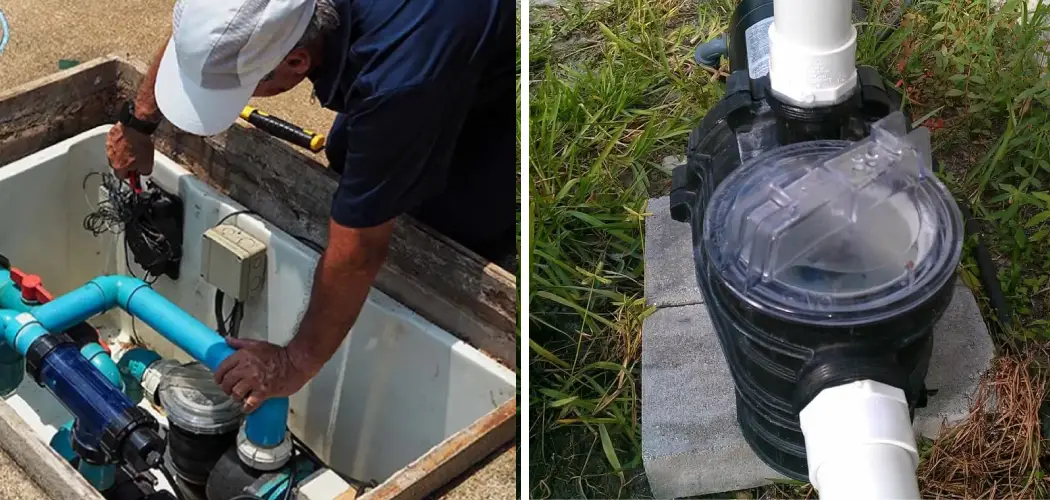owner looking for the easiest way to fix an air leak in your pool pump? Maybe you’re tired of dealing with fluctuating water pressure, decreased suction power, and headaches trying to maintain your perfect pool temperature.
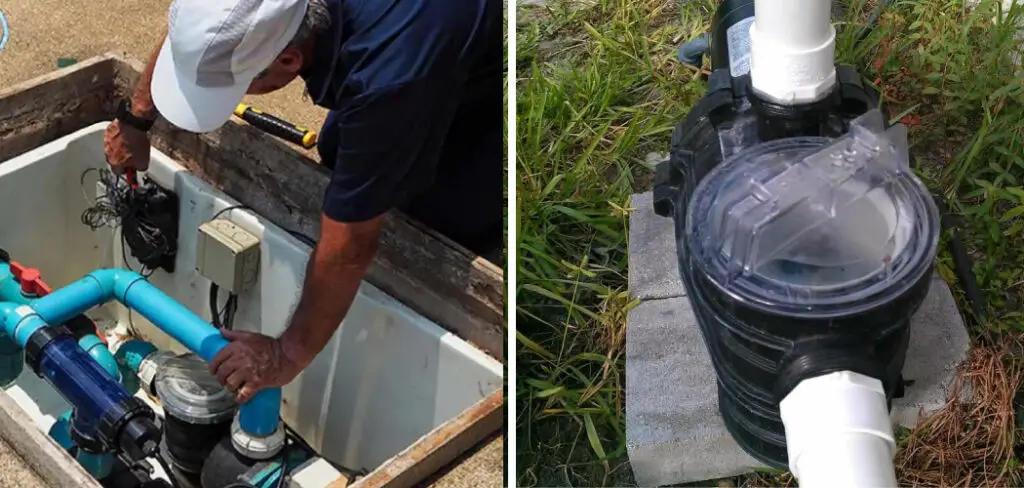
Don’t stress – how to fix air leak in pool pump can be simple!
In this blog post, we’ll walk you through all the steps necessary to diagnose and repair the most common issues related to a faulty pool pump.
You’ll learn about quick fixes as well as more involved solutions so that no matter what kind of issue is causing your problem, you can get it repaired in no time flat.
With our help, you’ll soon have crystal-clear water again!
What Will You Need?
Before you begin your pool pump repair, ensure you have all the necessary tools. Here’s a checklist to get you started:
- Screwdriver
- Pool putty or silicone
- Teflon tape
- Replacement o-ring (if needed)
Now, let’s dive into how to fix air leak in pool pump!
10 Easy Steps on How to Fix Air Leak in Pool Pump
Step 1. Identify the Leak Source:
First, you must figure out where the air leak is coming from. Run your pool pump and look for visible signs of air getting sucked into the system. Familiar sources are the pump lid, drain plug, and pipe connections. If you can’t find the source visually, you can use a soap solution. Spray it around suspected areas, and if air is being sucked in, you’ll see soap bubbles forming.
Step 2. Switch Off the Pump:
After identifying the source of the air leak, the next step is to switch off the pool pump. Safety is paramount in any repair work, so ensure the pump is entirely off before proceeding. Disconnect it from the power source to be on the safe side. This also prevents any water from circulating while you’re trying to fix the leak.
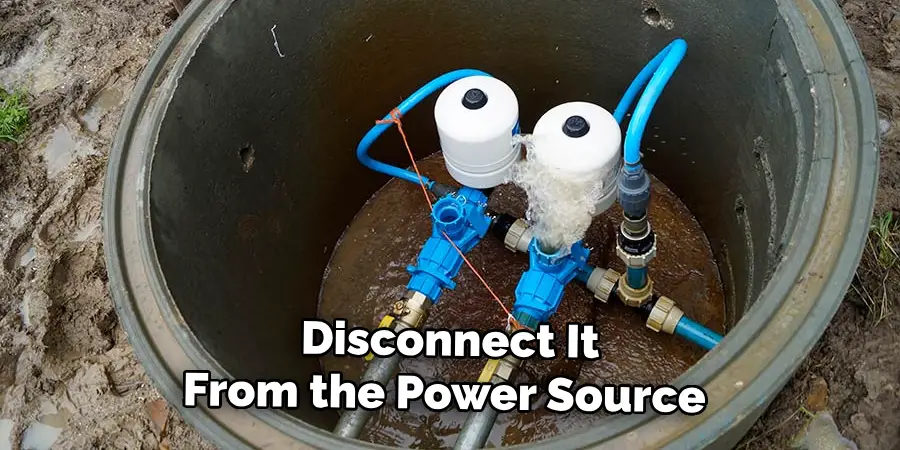
Step 3. Repair the Leak:
Once the pump is safely turned off, you can start repairing the leak. Depending on where the leak is, this might involve different actions. If the leak is from the pump lid or drain plug, remove it and apply a fresh layer of pool putty or silicone to create a watertight seal.
If the leak is happening at a pipe connection, disassemble the connection, apply Teflon tape to the threads, and then reassemble. For leaks at the o-ring, this may need to be replaced entirely. Always tighten connections appropriately, but avoid over-tightening as it can cause further damage. After finalizing your repair, let it cure or dry as instructed by the product manufacturer.
Step 4. Test the Repair:
After allowing adequate time for the repair to cure or dry, it’s time to test the repair. Reconnect the pump to the power source and switch it on. Monitor the pump’s operation, looking for any indications of air being sucked into the system.
If you used a soap solution to identify the original leak, you could use the same method to check if the fix was successful. If no bubbles form, congratulations! You’ve successfully fixed the air leak in your pool pump. If bubbles still appear, double-check your repair work and ensure all connections are tight and sealed.
Step 5. Regular Maintenance:
Regular maintenance is vital in preventing future leaks. This means routinely checking your pump and its connections for any signs of wear and tear. Ensure that the pump lid and drain plug are always tightly sealed, and replace any worn-out o-rings as soon as they deteriorate. By doing this, you’re not just prolonging the life of your pool pump but also ensuring that it operates efficiently, saving you time and money in the long run.
Step 6. Monitor and Adjust:
Keep a close eye on the pool pump’s performance after the repair. Make sure the water flow and suction power are back to normal. Adjustments might be necessary if you notice any discrepancies. For instance, you might need to tighten a connection or replace a part.
Remember, fixing an air leak in a pool pump isn’t a one-time job. It requires constant vigilance and prompt action whenever an issue arises. Ensuring regular checks will help you maintain an efficient and long-lasting pool pump.
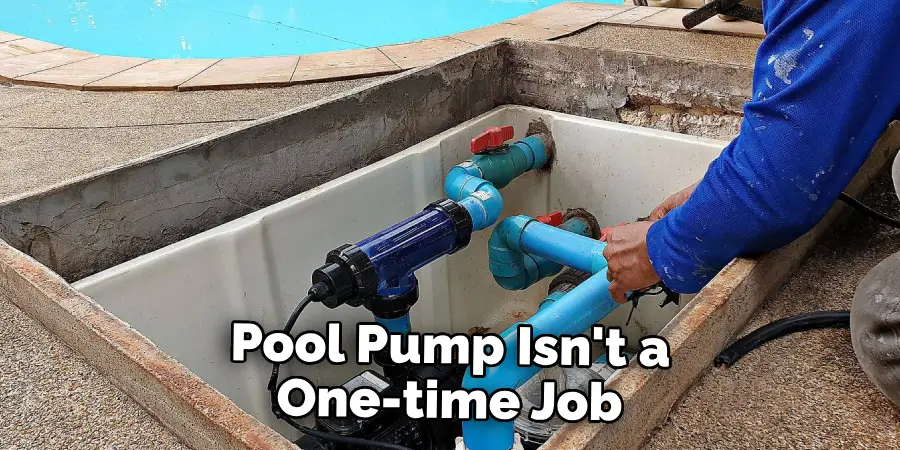
Step 7. Consult a Professional if Needed:
If you’ve followed all the steps above and still can’t fix the air leak, it may be time to consult a professional. A skilled technician has specialized tools and experience to diagnose and repair more complex issues quickly.
While it can be more expensive than a DIY repair, you can be confident that the job gets done right. Remember, if you’re not entirely comfortable working on your pool pump, there’s no shame in bringing in the experts. A professional fix can give you peace of mind and save you time and money in the long run.
Step 8. Preventative Measures:
Implementing preventative measures is another key step in maintaining a leak-free pool pump. Regularly check all pool equipment for signs of wear and tear and replace any damaged or worn parts promptly.
Consider investing in high-quality, durable components that can withstand the rigors of constant use. If your pool pump is old or frequently needs repairs, it may be more cost-effective to replace it with a newer, more efficient model. Remember, investing in prevention can often save significant time and money in the long term.
Step 9. Understand Your Pool Pump:
Gaining a comprehensive understanding of how your pool pump operates is an effective preventative measure. Familiarize yourself with the components and their functions. Understanding the system will help you quickly identify any unusual sounds, vibrations, or changes in operation speed that could indicate a potential air leak or other issues. This knowledge will allow you to detect problems early and intervene before they become severe or costly.
Step 10. Celebrate Your Success:
After successfully identifying and fixing the air leak in your pool pump, it’s time to celebrate your success! You’ve not only fixed the problem but also gained valuable knowledge about your pool pump’s operation and maintenance.
Going forward, you’ll be better equipped to handle similar issues, saving you time and the expense of hiring a professional. Remember, routine maintenance is crucial in extending the lifespan of your pool pump and ensuring its efficient performance.
Now, it’s time to enjoy a relaxing swim in your pool, knowing it’s in top-notch condition thanks to your diligent efforts.
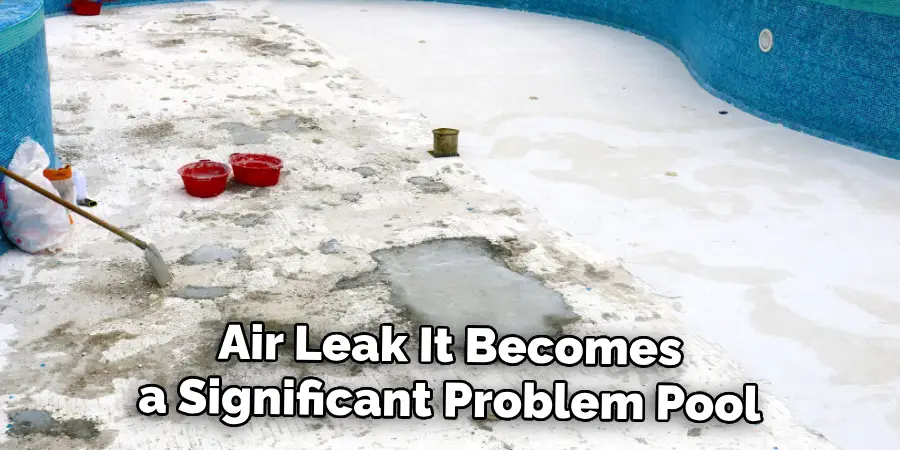
5 Additional Tips and Tricks
- Regular Inspection: Inspect your pool pump and its surrounding set up routinely. Look for signs of damage on the pump, piping, and other components. Regular monitoring can help catch a minor air leak before it becomes a significant problem.
- Check the O-ring: The O-ring is a common source of air leaks in pool pumps. Ensure it’s well-seated, free of debris, and not worn out. Replace it if necessary.
- Tighten the Connections: Loose connections can cause an air leak. Regularly check and tighten all connections in the pump system, including the hoses, valves, and fittings.
- Use a Leak Detection Kit: If you cannot locate the leak, consider using a leak detection kit. These are designed to help you find and fix air leaks in your pool pump efficiently.
- Add a New Pump Seal: If the above steps do not work, you may need to replace the pump seal. This is a more advanced task and may require professional help. A faulty or worn-out pump seal can lead to air leaks in your pool pump, so it’s essential to check and replace it when needed regularly.
By following these additional tips and tricks, you can ensure your pool pump is free of air leaks and running efficiently.
5 Things You Should Avoid
- Using Incorrect Tools: Using the wrong tools can lead to damage and result in air leaks. Always use tools that match the size and type of your pump’s components.
- Over-Tightening Connections: While loose connections can cause leaks, overtightening can also lead to damage and, subsequently, air leaks. Use caution to ensure fittings are tight but not overly strained.
- Installing Parts Incorrectly: Incorrectly installed parts, such as the O-ring or pump seal, can lead to air leaks. Ensure these are installed correctly, or consider hiring a professional if you need clarification.
- Avoid Chemical Damage: Certain chemicals can cause damage to pump components, leading to air leaks. Make sure to use chemicals as directed and avoid mixing different types.
- Ignoring the Problem: If you notice an air leak in your pool pump, it’s important not to ignore it. Even a tiny leak can lead to more significant issues if left untreated. Address the issue promptly to avoid further damage and potential safety hazards.
By avoiding these common mistakes, you can prevent air leaks in your pool pump and keep it running smoothly for years.
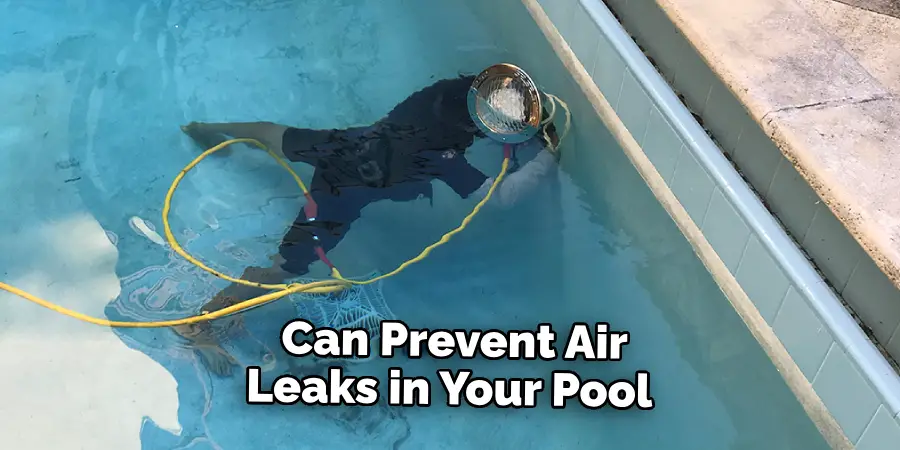
Conclusion
With these steps, you should now have a better understanding of how to fix air leak in pool pump. Just remember that it is important to always use safety equipment when dealing with any pool chemical and machinery repairs.
Furthermore, if you are ever in doubt, don’t hesitate to contact a professional for further assistance. Taking the time to ensure that all parts are correctly installed and taken care of is essential to keeping your swimming pool in the best condition possible.
The key is preventative maintenance; if you take the time to check on your pool’s components regularly, it can save you from future problems or, worse yet, costly repair bills! If properly taken care of, your pool can remain a source of fun and relaxation not only for yourself but also for family and friends alike.
So take a few minutes out of your day today to check those fittings and make sure everything is running smoothly!

